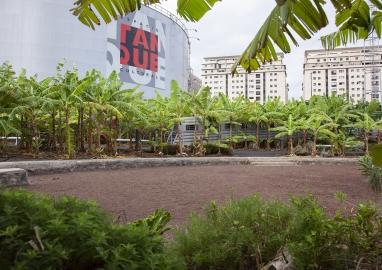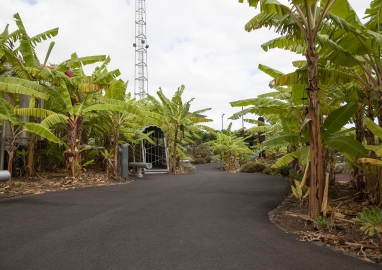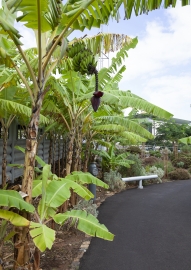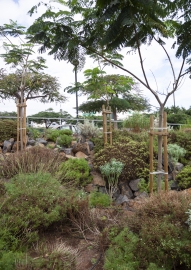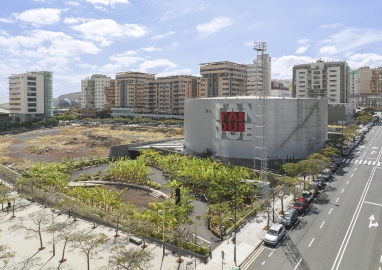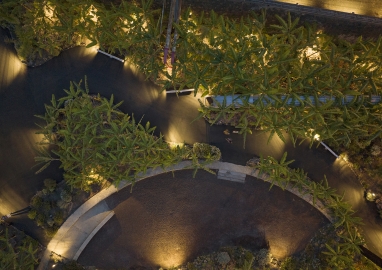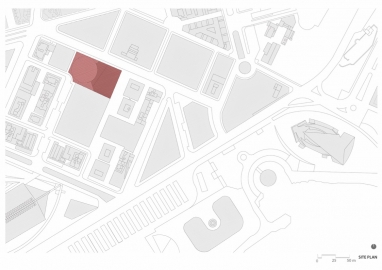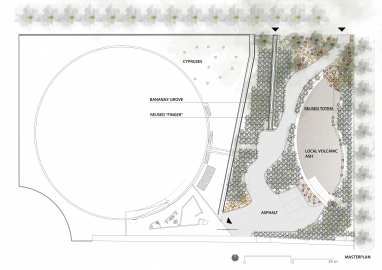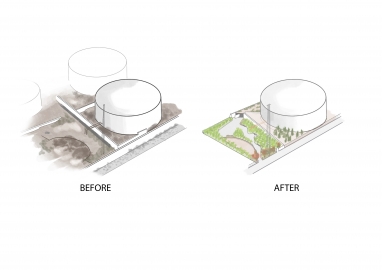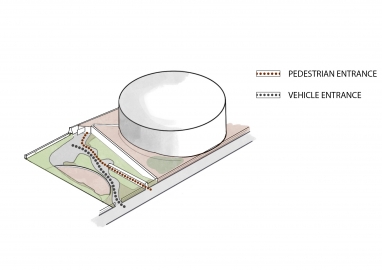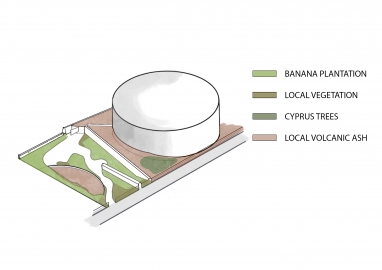El Tanque Garden
The ecological rehabilitation of a post-industrial area in Santa Cruz de Tenerife
El Tanque Garden is the ecological restoration of a post-industrial area that endows the Cabo Llanos neighborhood of Santa Cruz de Tenerife with its first green public space. Around a former oil refinery tank, reused as a cultural space since 1997 and protected industrial heritage since 2014, this banana trees garden recalls the agricultural landscape prior to industrialization, staging the city as a place of coexistence of different times, cultures and sensibilities that have shaped the identity of Santa Cruz de Tenerife. What used to be a contaminated underused land, though part of a protected heritage compound, is already a leafy garden, offering a public space for social cohesion, reconnection with nature and cultural heritage.
The garden sits around El Tanque Cultural Space that is a former oil deposit that is part of the urban geography of Santa Cruz de Tenerife since 1929 when the first refinery in Spain was built here. Faced with its imminent dismantling, the non-profit Amigos del Tanque advocated reusing one of these tanks, and succeeded to have it listed along with its entire plot, since 2014. Later, the public design contest for the restoration of its environment was won by our studio. The land was covered with banana trees as a way of recalling the agricultural fields that existed in this area before the refinery. As the exuberant subtropical vegetation colonizes the industrial relic, framing its overwhelming presence, the memory of the agricultural past is restored to build a sense of cultural continuity and belonging for the local community. The layout of the new garden respects the original plot of the site and the historical stone wall, while the base of an adjoining tank, disappeared since the 1990's, becomes now the perimeter of the plaza. The exterior of the Tank and its other industrial elements are rehabilitated and integrated into the general concept that combines heritage and nature.
The highly biodiverse garden in a neighborhood that completely lacked public green areas contains now 700 trees, shrubs and aromatic plants selected from the resilient and low-maintenance local flora. The lighting and furniture elements are designed and custom built with waste such as discarded divers' oxygen bottles. Care for the environmental impact is also perceived in the orientation of the lamp so that it avoids light pollution, as well as in the watering of the greenery, which is supplied with recycled water.


